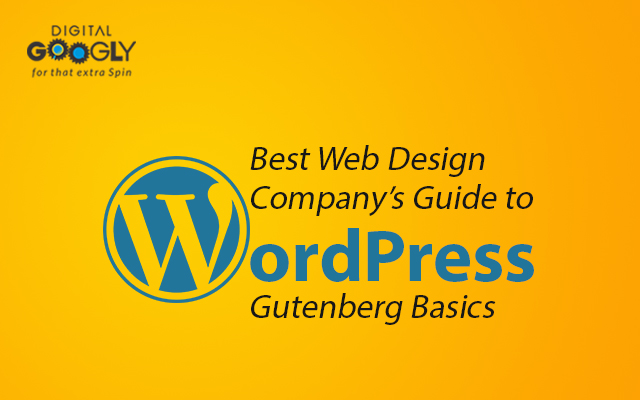Gutenberg is a recently-developed editing interface for those using WordPress. It has brought a significant change to WordPress 5 and has affected WordPress theme designers, plugin developers, and website creators working at Digital Googly, which is regarded as the best web development company in Kolkata. This post will serve as a learning guide and help you understand what Gutenberg is and what it means for WordPress developers and users.
What is the Gutenberg Editor?
Gutenberg is a relatively new way for individuals to produce content for their WordPress-themed sites. The classic editor has not changed much since it was developed back in 2003, and while that is okay for producing text-heavy blog posts, it is not suitable for today’s media-rich sites that contain more complex layouts.
According to the designers working at the best web design company in Kolkata, the Gutenberg editor allows you to create ‘blocks’ of images, texts, videos, and so on, which you can place in your pages or posts to create the layout. It supports things like creating fancy titles, dividing the text into columns, including full-width pull quotes, and so on. The result is a more straightforward and more spontaneous user experience.
Pros And Cons of Gutenberg Editor
Like all great inventions, Gutenberg comes with both pros and cons. Although it is still being developed, the updates and changes are mostly positive. Here, we discuss the benefits of this editor:
- Creating and editing pages and posts are more intuitive for users.
- You can be able to create a range of effects and layouts that are pretty tricky to achieve.
- The editing interface is almost clutter-free, making it much easier to give attention to creating content.
- It allows you to create custom blocks, increasing your ability to work with plugins and themes.
However, the professionals of a reputed web design and development company in Kolkata tells you about some of the downsides to Gutenberg:
- Even though it is easier to use in the end, the Gutenberg editor is a major change and probably slows people down in the beginning, as they get accustomed to the interface.
- It requires some work for the developers to get their plugins and themes ready for Gutenberg.
- As with all the major changes, there are a few bugs and teething problems, because of which some users get frustrated.
What does Gutenberg Mean for the Developers
Experienced designers of Digital Googly, the best web design company in Kolkata, say that Gutenberg is part of the WordPress core (starting from version 5.0), and it is not optional. There is a plugin that allows people to use the classic editor, but there is no option to turn off Gutenberg.
Bottom Line
If your plugins and themes are not compatible with Gutenberg, it will cause big headaches for the clients, and you will probably lose many of them.
On the hind side, even though Gutenberg offers major changes as far as user experience is concerned, it has effectively minimised the disruption for developers and users.
